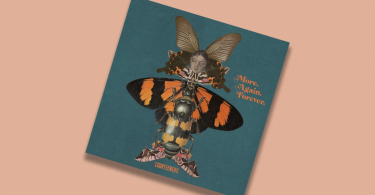The 1930s are characterised by hard times.
The 1930s are characterised by hard times. The worst depression in history had taken its toll on America, which left 25 per cent of the workforce jobless, and would eventually lead to another World War. More than ever, music and cinema became important in keeping the blues away.
Whilst businesses crumbled everywhere, people packed themselves into dancehalls, dancing the jitterbug to an exciting new form of jazz called ‘swing.’ Elsewhere, Skip James and Robert Johnson were recording music which later be known as ‘delta blues,’ music to which all subsequent rock can be traced back.
Here are five songs that define the music of that turbulent decade.
Strange Fruit – Billie Holiday
Originally a poem by a Jewish high school teacher, Strange Fruit is a disturbingly beautiful song about an ugly blotch on American history—the lynching of African Americans. Though not the first protest song, Strange Fruit is notable for being one of the first pieces of popular music to make a political statement about the battle for civil rights that all jazz musicians at the time would have been a part of.
Lady Day first performed the song at the Cafe Society in Greenwich Village, New York. The owner, Barney Stephenson, introduced her to the song, and fully aware of its potency, insisted that she would close the set with it, that waiters would cease service before she began, and that during the song, the whole room would be pitch black save a single, bright spotlight highlighting Billie’s face.
Naturally, the whole audience was stunned. Many artists have since covered the song, but none has come close to the fragile, disgusted power of Billie Holiday’s recording.
Minnie the Moocher – Cab Calloway
An accomplished singer, bandleader and dancer, Cab Calloway is one of the greatest and most sorely underrated all-round entertainers of the 20th Century. Minnie the Moocher is his signature song, a surreal story of lechery, drug use and insanity, masked in jive slang impenetrable to white audiences which is probably what stopped this song from being censored.
The irresistible ‘hi-de-hi-de-ho’ call and response sections are what make this one of the best novelty songs in music, thankfully given a new lease of life by Calloway’s appearance in the John Landis film The Blues Brothers. Also recommended is the old Betty Boop cartoon, also called Minnie the Moocher, in which Calloway appears singing and dancing to the song in a cave as a ghost walrus. Really.
Sing, Sing, Sing – Benny Goodman
Before Benny Goodman, big band numbers consisted of docile pop tunes which were thought to be crowd-pleasing, but Goodman quickly realised that it was the wild, intense instrumentals that got the audience going. “Sing, Sing, Sing” is the best known of these, though it was originally a Louis Prima song where he did actually, you know, “sing.”
The recording brims with frenzied solos from all the instruments, but it is Gene Krupa’s vigorous drumming that drives the piece. “Sing, Sing, Sing” has since become one of the most recognisable tunes of the swing era, and is often used in films and TV to evoke the 20s and 30s.
Cross Road Blues – Robert Johnson
The mysterious shadow of Robert Johnson looms over rock music. You may already know the story—a boy proficient at harmonica but terrible at the guitar leaves his home in Robinsonville for a year, and returns with the ability to play the blues unbelievably well, unlike anyone had ever heard before.
A rumour quickly spread that Johnson could only have achieved this talent by selling his soul to the devil. This otherworldly talent is displayed in this song, a visceral cry of loneliness coupled with incredibly precise singing and complex guitar technique.
Over The Rainbow – Judy Garland
This is one of the most beloved and critically acclaimed songs ever written– the Recording Industry Institute of America called this the ‘Song of the Century,’ so it’s curious to reflect on how it was initially deleted from The Wizard of Oz for “slowing down the picture.”
Of course, it’s now one of the most recognisable songs in film and musical history, and has since become Judy Garland’s signature song. Its enduring appeal can be explained by the song’s ability to speak to a longing in all of us. We’ve all felt like Dorothy, yearning to escape, and have naively hoped that one day we’ll find “some place where there isn’t any trouble.”
What do you think? What else would you add to the list? Have your say in the comments section below.
Image: Schnobby / Wikimedia Commons








